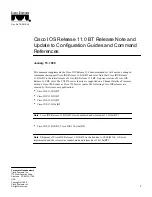
49
from the satellites with higher elevations and the number of satellites included in the
RTCM messages will not be greater than that specified in the edit box. This edit box is associated
with the receiver parameter
/par/rtcm/base/svm
.
The
Health
list box is intended to define the reference station status:
•
Good
– station is operating normally.
•
Bad
– station is not working normally.
•
Unknown
– station health status is unknown.
The corresponding GRIL parameter is
/par/rtcm/base/health
.
With the radio buttons
Measurements Sent
, the user specifies the measurement types that
will be included into the RTCM message types 18 through 21. Currently, the mentioned RTCM mes-
sages always contain C/A measurements. One can also include either or both P/L1 data
18
and P/L2
data
18
in these messages. The checkbox
CA/L1
corresponds to the receiver parameter
/par/rtcm/base/meas/ca
. The checkbox
P/L1
is associated with the receiver parameter
/par/rtcm/base/meas/p1
. The
P/L2
checkbox is associated with the receiver parameter
/par/rtcm/base/meas/p2
.
The
GPS
and
GLONASS
checkboxes, which are grouped together within the
System Used
area, indicate the satellite constellations included in the RTCM message types 18, 19, 20 and 21.
These checkboxes are associated with the receiver parameter
/par/rtcm/base/sys
.
If the
Pseudo-range smoothing
checkbox is selected, the receiver will use smoothed pseu-
doranges in the RTCM message types 19 through 21. This checkbox corresponds to the receiver pa-
rameter
/par/rtcm/base/smooth
.
CMR Settings
The
Station ID
edit box corresponds to the receiver parameter
/par/cmr/base/stid
. With this pa-
rameter the user can specify the base station ID, which will be included into the CMR messages
transmitted by this base station. On the rover side, this ID allows easy identification of the refer-
ence station whose CMR messages are being received by the rover receiver.
The list box
Motion
characterizes the motion of the reference station:
•
Unknown
– the motion state is undetermined.
•
Static
– the receiver is motionless.
•
Kinematic
– the receiver is in motion.
This list box corresponds to the receiver parameter
/par/cmr/base/motion
.
Use the
Short ID
,
COGO
and
Long ID
to include the reference station’s point feature code
19
into CMR message type 2. These edit boxes are associated with the receiver parameter
/par/cmr/base/desc
.
18
On condition that the TPS receiver is configured as a dual-frequency unit.
19
Feature code is an alphanumeric code used to describe a survey point.
















































